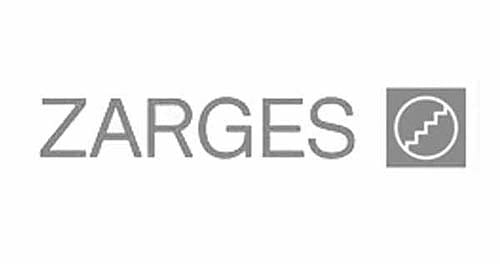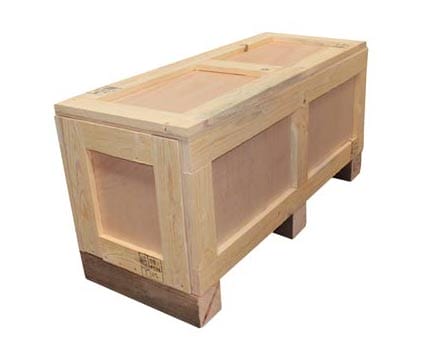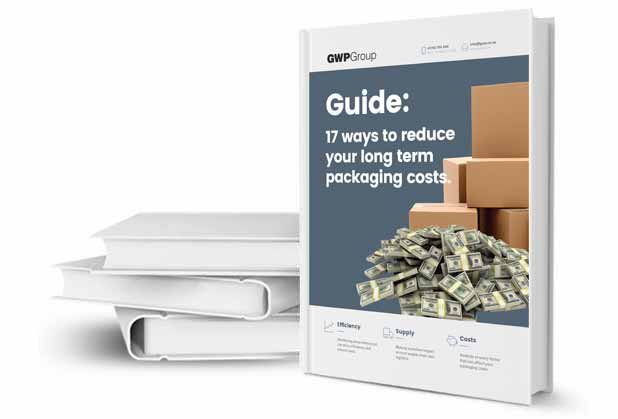An introduction to ISPM 15
Requirements for shipping timber packaging internationally
If your business uses wooden crates, pallets, or timber packaging, you must be aware of ISPM 15.
ISPM 15 – meaning International Standards for Phytosanitary Measures – is a regulation for the heat treatment of timber pallets and packaging. Any wood material thicker than 6mm used for shipping products between countries is subject to the regulation. Its primary purpose is to prevent the spread of pests (insects), diseases, and contaminants in the wood.
This guide provides your business with all the information it needs on ISPM 15, ensuring your export packaging complies with the regulations.
Contents
Introduction
Background of ISPM 15
The International Plant Protection Convention (IPPC) originally developed the “International standards for Phytosanitary Measures” No. 15 (ISPM 15).
Phytosanitary measures are steps taken to help protect humans, animals, and plants from contaminants, pests (typically insects), or diseases. There are 24 International Standards for Phytosanitary Measures in total.
ISPM 15 specifically covers wood packaging used for international trade. As such, items including wooden pallets, wooden shipping crates, timber cases, and dunnage all fall within the scope of the standard. However, timber packaging manufacturers using processed woods, such as plywood, OSB, and particleboard, are exempt.
Under the regulations, the supplier from whom you have purchased timber crates, pallets, or wooden export packaging must treat them appropriately. It is also essential that your packaging carries the correct marking.

The purpose of ISPM 15
Protecting global forests and ecosystems
The purpose of ISPM 15 is to protect environments from pests and diseases found in wood.
The regulations recommend heat treatment of timber packaging mode of coniferous and non-coniferous raw wood to prevent these pests and diseases from spreading and negatively affecting another country’s plants or ecosystems. Kiln drying and fumigation (with Methyl bromide) are also acceptable.
However, there are other advantages to using heat-treated wooden pallets, including enhanced sterilisation, durability, and weather resistance.

Countries that require ISPM 15
ISPM 15 is not mandatory. However, its widespread adoption by more than 70 countries and economic unions engaged in global trade, such as:
- UK
- US
- China
- European Union
- India
- Japan
- And more!
It renders it crucial for numerous manufacturers involved in exporting goods. This list of countries evolves each year.
Key components of ISPM 15
ISPM 15 treatment methods and exemptions
All wood materials used to transport goods between countries that are thicker than 6mm must meet the criteria set out in ISPM 15.
The regulations encompass pallets, dunnage, crates, cable drums, spools, packing cases, and boxes, regardless of whether they are made of softwood (coniferous) or hardwood (non-coniferous).
The standard does not extend to items manufactured from hardboard, plywood, or other wood panel products (e.g., processed wood materials), as well as those made from paper or plastic.

Other exemptions
Here is a list of all wood packaging exemptions:
- Presswood pallets.
- Venner peeler core.
- Wood packaging less than 6mm in thickness.
- Euro block pallet blocks.
- Wooden barrels that have been heat-treated to contain alcohol.
- Sawdust, wood wool and shavings.
- Gift boxes with processed wood.
Debarking
Wood used in the production of packaging materials must be debarked before fumigation or heat treatment.
This precautionary measure prevents potential re-infestation by pests during the period when the wood is awaiting fabrication into packaging (or even post-manufacture).
However, the debarking process may not always yield wood completely free of bark. According to the standard, the wood should have no more than 3cm of bark width (irrespective of length) after bark removal.
Alternatively, if the remaining bark exceeds 3cm in width, each piece should not exceed 50 square centimetres,
Authorised treatment methods
ISPM 15 describes the standard processes for thoroughly eliminating pests, diseases, and contaminants in wood packaging materials using each method.
There are four methods of treating wood packaging, but only two of them are approved by ISPM 15 standards (HT and MB):
- Heat treatment (HT): Heating wood packaging until the minimum wood core temperature reaches 56 degrees Celsius. The temperature should remain at this level for at least 30 minutes.
- Methyl bromide (MB) fumigation: Wood fumigation involves placing wood in a sealed area and introducing fumigants, such as gases or chemicals, to eliminate pests. It is, however, banned in EU countries.
- Dielectric heat (DH): This process uses electromagnetic waves to generate heat to 60 degrees Celsius in 30 minutes (minimum) for effective treatment of the packaging.
- Sulphuryl fluoride (SF) fumigation: Similar to methyl bromide but using sulphurl fluoride instead, this process is also banned in EU countries.
These types of treatments successfully eliminate the following pests:
- Insects
- Anobiidae
- Bostrichidae
- Buprestidae
- Cerambycidae
- Curculionidae
- Isoptera
- Lyctidae (with some exceptions for HT)
- Oedemeridae
- Scolytidae
- Siricidae
- Bursaphelenchus xylophilus
However, heat treatment is the preferred method for ISPM 15, as it is safer and more effective than chemical fumigation. The heat eliminates insects and larvae, diminishes moisture content, and ensures pallets are safe to handle.
Chemical fumigation, in contrast, has led to recalls in the food and pharmaceutical sectors due to trace chemical residues and often leaves an undesirable odour. Chemically treated pallets must not be burnt or used for other purposes (including DIY projects) due to their harmful nature.
Certain pests can resist heat treatment and are managed by the National Plant Protection Organisation on a case-by-case basis, in which case the heat treatment may require a higher temperature.

ISPM 15 marking
Regulatory requirements for the correct labelling of wooden packaging
Wooden packaging must carry a stamp (often called the wheat stamp) indicating that it has completed the ISPM 15 process.
Wooden packaging subjected to this procedure receives a globally recognised authentication mark that features several elements:
- IPPC certification symbol.
- XX: represents the two-letter ISO country code (e.g., GB for the United Kingdom).
- 00: represents the unique certification number issued to NPPOs – the regulating agencies overseeing individual wood packaging manufacturers. This code allows for traceability back to the NPPO/auditing agency.
- 1111: the unique certification number issued to the treatment provider and/or manufacturer.
- YY: represents the treatment applied to the wood packaging material.
- HT is the code for heat treatment to a minimum of 56°C (133 °F).
- MB is the code for methyl bromide fumigation.

The importance of ISPM 15 marking
While some pallet and timber packaging manufacturers may include extra details on heat-treated products, the presence of the ISPM 15 authentication mark is the definitive assurance of compliance and safety.
The traceability of the mark helps to identify suppliers that have undergone stringent checks to ensure the packaging is correctly heat-treated.
When acquiring wooden pallets or packaging for international shipping, it is crucial to verify that they have been appropriately treated. Ensure they bear the appropriate mark and consider requesting a certificate from your supplier to guarantee compliance.
Adoption and implementation
Infrastructure and approval of facilities
To attain the status of an Authorised Certification Official, the National Plant Protection Organisation (NPPO) must grant accreditation for certificate issuance.
The evaluation process examines factors such as the sources and varieties of wood utilised, the methods of treatment employed, compliance with standards, the presence of facilities to segregate treated and untreated wood, and the designated individual’s knowledge of marking requirements, treatment protocols, wood types, and early detection of live pests.
Regular renewal of the certificate every six months necessitates a continuous commitment to upholding standards.
Reusing wood packaging material
Following the treatment and application of the quality mark to the wood packaging material, no additional treatment is necessary unless the material undergoes repairs or re-infestation (which may require the pack/pallet to be destroyed).
Impact of international trade
Import controls
Should a shipped product reach its designated country without an official certification stamp, the government retains the authority to subject the packaging and its contents to various measures. These measures can include heat treatment, debarking, burial, chipping, or even destruction (including its contents). The sender incurs the costs associated with any of these processes.
As such, it is advisable to avoid taking the chance of non-compliance in such cases.

Summary
The importance of ISPM 15 for wood packaging
The complexity of international shipping standards can often be confusing. As such, sourcing your wooden shipping crates and pallets from an established, knowledgeable supplier is crucial.
At GWP, we have considerable experience providing timber packaging to a vast range of businesses and industries. Our experts can guide you through sourcing the most suitable packaging for your specific application. This benefit is in addition to a team of designers, a modern production facility, and an extensive range of packaging materials and options.
If you would like further information or advice on wood packaging and how ISPM 15 may affect your business, please do not hesitate to get in touch.
About the author

Stuart boasts over 20 years of top-level experience as a packaging design engineer, in roles at Insit Moulded Packaging (IMP) and Macfarlane.
Important note
Due to the regulated nature of the topic this guide addresses (timber packaging) we have taken extra steps to ensure its accuracy and reliability. You can find out more in our content policy.
All information is, to the best of our knowledge, accurate and correct at the time of publication. Please also note that, as all scenarios vary, not all information contained in this guide may apply to your specific application. There may also be specific regulations or laws, not covered within this particular guide, that apply. Please view the list of timber packaging regulations for further details.
Share this article
Further reading
Products in this guide
Get in touch
Related guides
7 advantages of using wooden export crates (and 5 disadvantages)
Export packing lists – 10 crucial details to include
Export packaging guide – 7 considerations for international shipping
17 reasons to switch to returnable transit packaging
Analysis: Single trip packaging vs returnable packaging
Transit cases – how to decide which is right for you
Shipping cases: 5 options for safe transit of your goods


















































